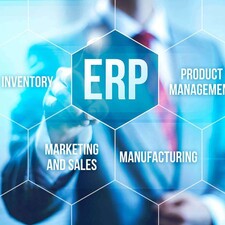Blog
ERP Evaluation - 6 Key Factors

Summary
You'll quickly discover during an ERP evaluation that not all software is created equal. There are wide variations in ERP software capabilities—for good reason. Some companies need the advanced functionality built into a higher priced system, while others may have less complex criteria and can choose a more moderately priced solution.
In purchasing a new ERP system, there are multiple decision points to consider. Careful evaluation of several key criteria can help guide you to the right decision.
Consider future business goals.
Ask yourself where the organization will be in five years and make assumptions based on that strategic plan to ensure that you are looking to the future as you begin preparing for the system implementation. Will the new system have the capability to do everything your business strategy demands? How well does it perform in terms of speed, reliability and integration with other systems? Will it meet industry-specific requirements beyond the ability of your current system?
Cost is certainly a factor, but should not be an overriding consideration in ERP evaluation.
Less expensive systems can result in more issues down the road, including the inability to adapt to meet changing needs. It might be more cost effective to select a comprehensive system with a bigger price tag if it proves to be the best fit your company’s needs. Weigh what each ERP solution can offer against the goals you have set for your company. The end goal is to make your business more efficient and profitable. Finding a solution that provides the strongest overall return is a much more significant win than limiting upfront costs.

Being able to act on data in the ERP system is critical.
Carefully evaluate the ability of your ERP system to get information out and into the hands of decision makers. Communicating changes and trends gives managers better insight into current operations and future needs. Sometimes, a built-in reporting system is good enough; when it isn’t, consider incorporating a business intelligence system in conjunction with an ERP database during the selection process. The type of business you have will help determine what reporting features you need to be compliant with current regulations.
Maintaining profitability on any given project often hinges on your ability to make sound estimates.
That’s where the right ERP system comes into play—it will draw from relevant data on labor, materials, and ancillary services to create an accurate, timely snapshot of total costs versus the estimate. From there, it can determine the true profitability of the project. Additionally, the software allows you to save all project data as a template, which can give you a head start when making forecasts and quotes for new projects.
Choose a deployment model that will allow you to best meet your business needs, whether it is on premise, in the cloud or in a hybrid environment.
During your ERP evaluation determine if the deployment model or the acceptable alternatives provides an important context for assessing vendor suitability and a framework for determining long-term ownership costs. With a cloud-based solution, for example, you can avoid investing in expensive hardware and use a Software-as-a-Service (SaaS) model to reduce your onsite workload demands.
For most organizations, the goal is to expand and grow.
Therefore, look for an ERP solution that’s built on a scalable architecture so that it can evolve with your company. Consider not only the features you need now, but the ones you may need in the near term. You need a solution that is flexible enough to accommodate evolving business processes and new initiatives and is scalable enough to include additional users. You should also be able to phase in new ERP functionality as needs change.

As you embark on your ERP evaluation journey, you’ll need to know how to navigate the many options. A new white paper from abas can help guide you in the selection process. Download the whitepaper here: Selecting an ERP System in 7 Easy Steps.


